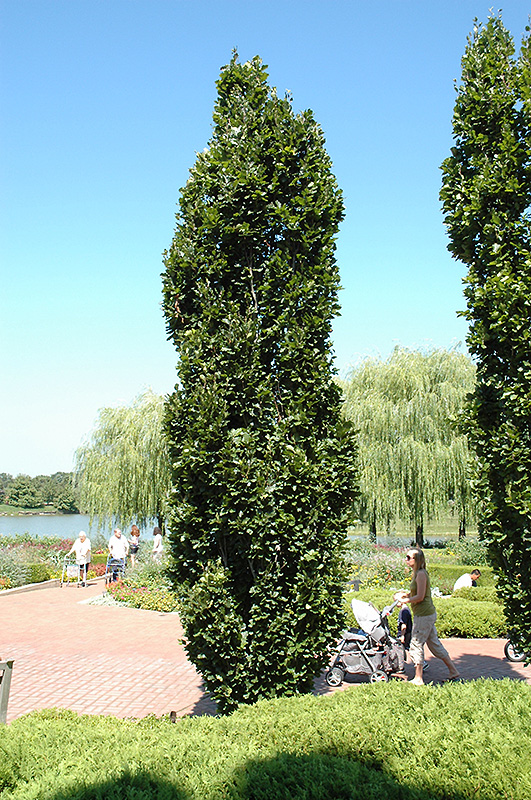Plant Finder
Pyramidal Beech
Fagus sylvatica 'Fastigiata'
Height: 50 feet
Spread: 10 feet
Sunlight:
![]()
![]()
Hardiness Zone: 5
Other Names: Common Beech
Description:
A tall, extremely narrow tree of the highest quality, excellent for articulation or as a tall screen; prefers rich soil and regular moisture; an ideal size for home landscape use
Ornamental Features
Pyramidal Beech is primarily valued in the landscape for its rigidly columnar form. It has dark green deciduous foliage which emerges light green in spring. The serrated pointy leaves turn an outstanding coppery-bronze in the fall. The smooth silver bark is extremely showy and adds significant winter interest.
Landscape Attributes
Pyramidal Beech is a dense deciduous tree with a narrowly upright and columnar growth habit. Its average texture blends into the landscape, but can be balanced by one or two finer or coarser trees or shrubs for an effective composition.
This is a relatively low maintenance tree, and usually looks its best without pruning, although it will tolerate pruning. Deer don't particularly care for this plant and will usually leave it alone in favor of tastier treats. It has no significant negative characteristics.
Pyramidal Beech is recommended for the following landscape applications;
- Accent
- Shade
- Vertical Accent
Planting & Growing
Pyramidal Beech will grow to be about 50 feet tall at maturity, with a spread of 10 feet. It has a low canopy with a typical clearance of 2 feet from the ground, and should not be planted underneath power lines. It grows at a slow rate, and under ideal conditions can be expected to live to a ripe old age of 120 years or more; think of this as a heritage tree for future generations!
This tree does best in full sun to partial shade. It does best in average to evenly moist conditions, but will not tolerate standing water. It is particular about its soil conditions, with a strong preference for rich, acidic soils. It is somewhat tolerant of urban pollution. This is a selected variety of a species not originally from North America.


